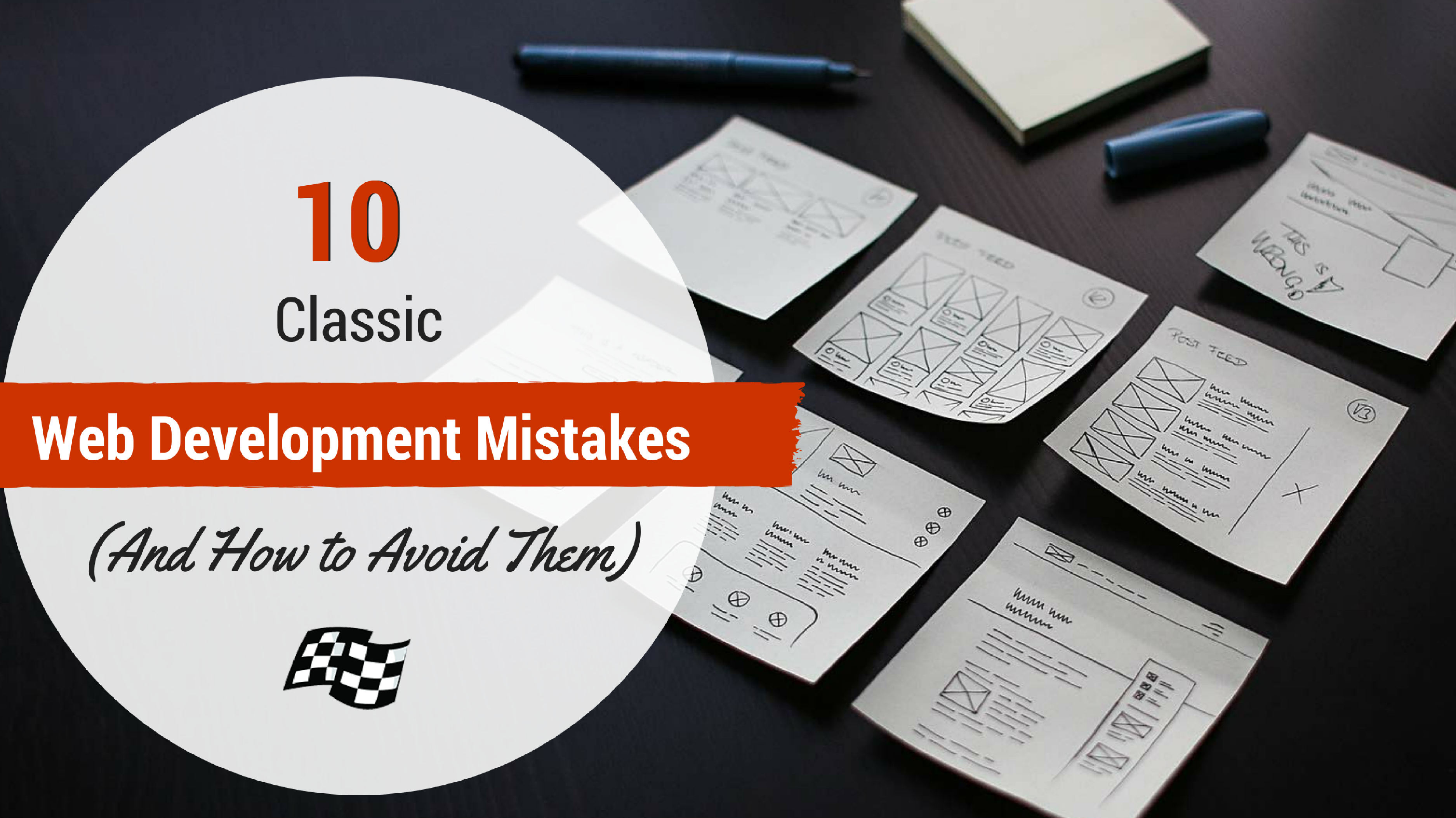
You’ve turned your killer idea into a killer start-up. Now it needs a killer website. Your branding is sorted, you have some design examples you like, and your cousin, as it turns out, is a freelance web designer. Sweet.
Not so fast. Commissioning a new site might seem like a straightforward process, but there are numerous ways it can go awry:
1. Purpose (or rather, lack thereof)
The number one question you need to answer is: What is this website for? Sounds obvious, but if you need it to act as an ecommerce portal or a lead generation tool (not just a holding page for your brand), your design, functionality, and budget will vary.
2. Not knowing your audience

Who are your potential customers? Get clear on their needs, behaviors, and tastes by determining their buyer personas. Having that information at hand will help you determine the type of site you need to create as well as what elements to include. That way, when your ideal customer arrives they’ll immediately feel at home and want to hang around longer.
3. Writing a thin (or incomplete) brief
A website design project often starts with a design brief, which is a document you provide the designer that details your objectives and your general vision for the website. If the website agency doesn’t have enough information, they won’t be able to give you what you want. Take the time to put together a proper brief, including detail on your company’s background, your competitors, and technical and functional requirements.
Think about the look and feel you’re after, find examples of websites you like, and explain what about them appeals to you. Likewise, if there are websites you specifically don’t like, be sure to include them as well.
4. Outlining vague milestones (or omitting them completely)

Designing a website is a big thing. Don’t just give your agency the brief and then wait for them to call. That’s just asking for trouble. Decide on a realistic date for when you want the website to go live and then set milestones for tasks like wireframes and testing.
Specifying development objectives upfront will ensure you’re kept in the loop along the way. If this makes the agency uneasy, look for a new agency. If they’re not keen on working to deliverables, they probably can’t be trusted to meet your deadline.
5. Slow loading website (a sure and quick death)
A site can be many wonderful things: Lovely to look at, cleverly designed, intuitive, and generally appealing, but if it loads slowly, none of that will mean a thing. Your site needs to load quickly for everyone, not just for visitors with a decent connection. Also, if your site is slow, it’s not search engine friendly.
6. Skimping on copywriting

You’ve gone to the trouble and expense of hiring a professional designer, don’t trip yourself up by doing the copywriting yourself. Hire a specialist and get it done right the first time. That said, it’s also not as simple as finding a freelancer and leaving them to it.
Sit down with your various stakeholders and iron out the details: Tone of voice, messaging, page objectives, structure, and so on. In his excellent book, Neuromarketing, Patrick Renvoise outlines the following model:
Step 1: Diagnose the pain. Figure out what’s keeping your prospective customers from reaching their goals. What’s keeping them up at night? Start any copy you write with that in mind.
Step 2: Differentiate your claims. What makes yours a unique and valuable offering? How are you planning to solve their problem? And why are you the best person (or company) for the job?
Step 3: Demonstrate the gain. You’ve said you have what it takes – now it’s time to put your money where your mouth is and provide some evidence. This is where you haul out the testimonials, case studies, statistics, and anything else you can think of to back up your claims.
Step 4: Deliver to the “old brain.” You need to drive home the point, and the best way to do that is to make sure it’s delivered directly to the reptilian part of your prospects’ minds (i.e. the highly emotive, decision making part).
To do this you must demonstrate your value quickly and directly. Most people are hazy on the middle bits, but tend to instinctively remember beginnings and endings. Contrasts such as “Before/After” or “Then/Now”, along with well-chosen visuals, will help with this.
7. Treating your website as a one-off project
Another common mistake people make is to treat their website like it’s a project to be ticked off their to-do list. It’s anything but. In fact, launching your website is just the beginning. Only once you’ve gone live and started attracting visitors will you be able to properly assess what works and what doesn’t.
You may find that placing the contact forms at the end of the page wasn’t such a great idea after all. It’s only after you shift them to the top and conversion rates increase that you realize the flaw in your original thinking.
8. Not making it responsive

Save yourself the headache of maintaining two sites (a mobile and a desktop version) and make your main site responsive so it will display properly on ALL devices. Remember, when your site changes shape to fit a mobile device, so do the various elements (calls to action, contact details, etc.). You need to keep the user experience in the front of your mind always and make sure your site looks good and performs well regardless of how the user is accessing your site.
9. Waiting until after you’ve built the site to hire an SEO agency
Web design and SEO are not part and parcel of the same package. They’re standalone skillsets that require vastly different kinds of expertise. Rather than risk your website languishing in some undiscovered corner of the internet, hire an SEO agency to work with your developers to ensure they’re creating a structure that’s search engine-friendly.
From keyword research, intuitively organised pages, and a sensible folder structure to appropriate naming conventions and URLs that include your target keywords, there’s a lot that needs to be considered.
Additionally, an SEO agency can help you discern which content to keep from older versions of your site (if this isn’t your first rodeo) — and show you how you can save it. They’ll also help you set up 301 redirects to make sure high-performing pages remain that way with the new design. (Nobody likes a 404.)
10. Getting a niche CMS (Content Management System)
Opting for a niche CMS is just going to result in grey hair (possibly even tears). You’re far better off using a well-supported CMS such as WordPress, Joomla, or PyroCMS. It’ll make your life easier when you want to add plugins or get further development completed.
There’s a lot to keep in mind when developing your website, but don’t let the apparent enormity of the task put you off. Approach it in stages, be prepared to makes adjustments along the way, and most importantly, enjoy the process. Take the time to properly plan your new site from the get-go and you’ll reap the rewards down the line.
